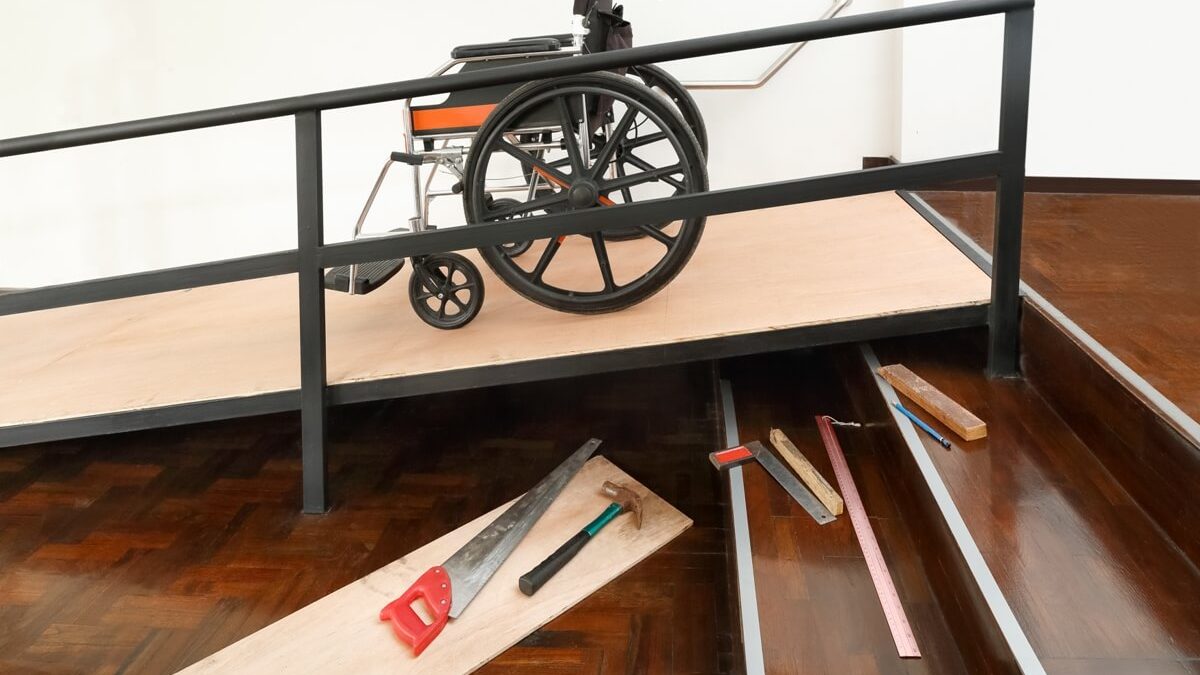If you use a lightweight wheelchair to get around in your home, there may be improvements to make so that your home is fully wheelchair accessible. Your home should not only allow wheelchair access to every room, but each room should have appropriate modifications to make it handicap accessible. Here are some of the things that you could do to make your home more accessible for lightweight wheelchairs so that users can retain independence.
How to Make Your Home Handicap Accessible
Life looks different from the vantage point of a wheelchair user, but it doesn’t have to be more difficult. Making simple adjustments around the home can grant a wheelchair user the freedom to move around their home and get on with everyday life on their own terms.
Also Read: Going “out out” In A Wheelchair – The Realities and What More We Can Do
Some things that you can do all around the home to make it more wheelchair accessible include:
- Lower doorknobs
- Change doorknobs to lever handles
- Lower light switches and power sockets
- Install a stair lift for any staircases
- Install grab rails wherever extra stability is required
- Ensure that all flooring is smooth and durable
- Remove doorsteps and other such obstructions
- Widen door frames to at least 900mm/35 inches
- Install an easy-to-reach panic button
Wherever small steps cannot be removed, the best thing to do is to install wheelchair ramps. A door-line bridge easily makes thresholds wheelchair accessible, and if there is a larger step then a permanent wheelchair ramp is a permanent solution to the accessibility problem. Or, like a compact collapsible wheelchair, you might also want the convenience of portable wheelchair ramps, so you can use these wherever you go to ensure wheelchair accessibility.
How to Create a Handicap Accessible Kitchen
Kitchens are often narrow spaces with the counter-tops at chest level, and appliances and cupboards are usually at standing height, which obviously restricts access for wheelchair users. You can change this by lowering the level of all the work surfaces in the kitchen and ensuring that the storage units are at ground level. Make sure that all sockets, switches, and appliances are within reach for a wheelchair user and that ovens, hobs, dishwashers, etc are easy to use from this position. There are also plenty of kitchen mobility aids to invest in that can allow those with limited mobility to use kitchen facilities to cook and dine independently.
How to Create a Handicap Accessible Bathroom
Having a wheelchair accessible bathroom improves quality of life by letting wheelchair users and anyone with mobility challenges retain their dignity. First of all, a bathroom must be big enough to allow a wheelchair to turn a full 360 degrees in the open space. There must be free space in front of the toilet and a lowered sink. The bathroom will need to be renovated if the existing space is too small. It will also be necessary to install bathroom grab rails around the toilet and the bath or shower. Additional toileting aids such as toilet frames and wipers or bathing aids such as bath lifts and shower stools are very helpful and improve accessibility.
How to Create a Handicap Accessible Bedroom
Getting into and out of bed and being able to sleep comfortably are also things which require adjustments to make them accessible for everyone. A bed hoist or sling can help a person to transfer from a wheelchair into bed safely. An adjustable bed can also ensure that the user is able to sleep in comfort and safety.
Additions such as bed rails or hoists ensure both safety and independence, allowing the user to sit up in bed by themselves and aid them in getting into and out of bed. As it may be more difficult for someone with a handicap to get out of bed to the bathroom in time, using bed protectors and incontinence products can also be helpful.
Also Read: 6 Tips On How To Improve Central Heating And Indoor Air Quality In Winter
How to Build a Handicap Ramp
Some homes have unique layouts which can make it difficult to find a wheelchair ramp in the right size. If you would prefer to build your own wheelchair ramp to ensure a customised fit, this is also an option. You just need to make sure that the ramp is sturdy and safe to use and complies with local authority regulations. These helpful guides explain how to build a ramp:


Stay connected